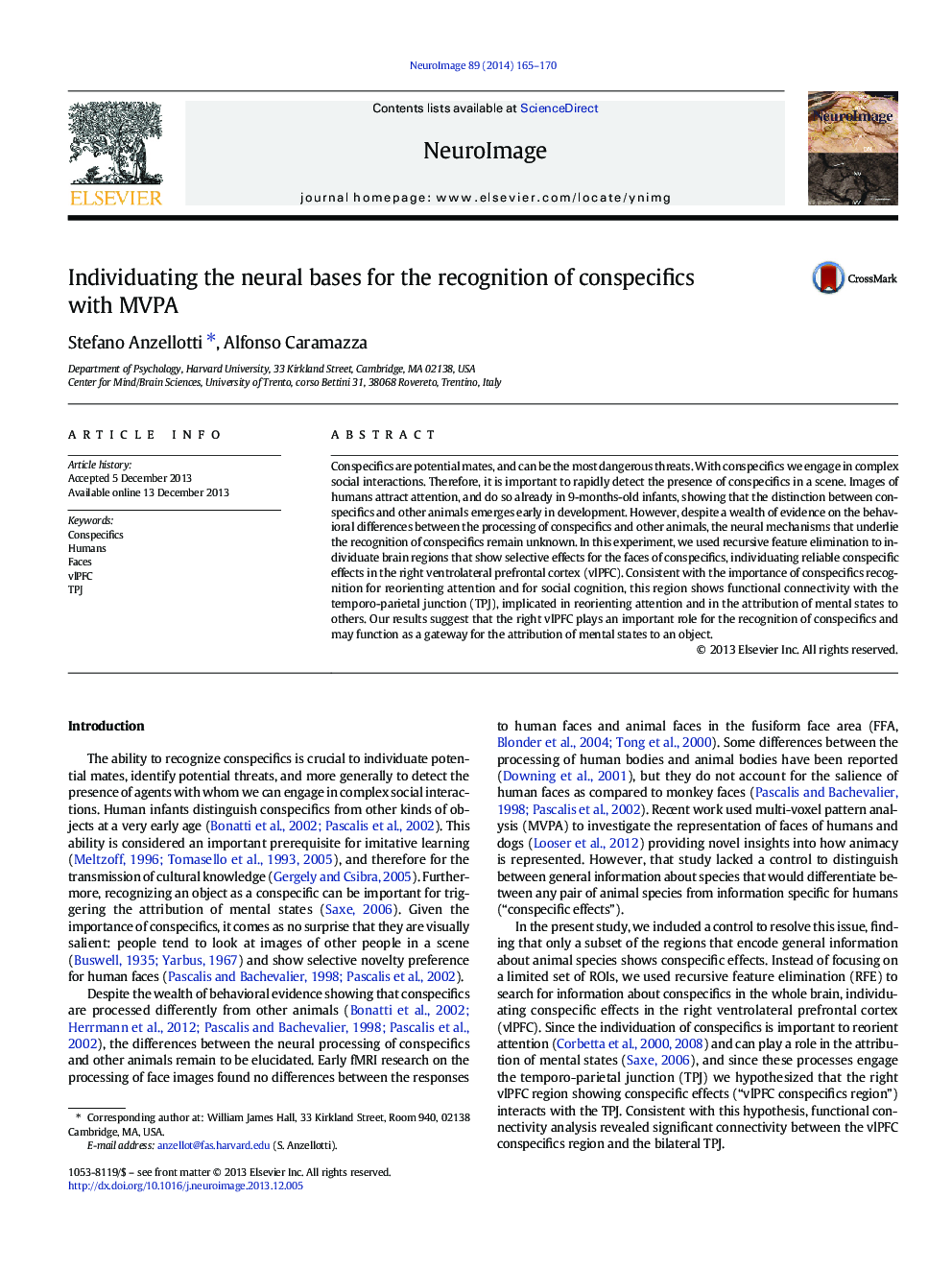| Article ID | Journal | Published Year | Pages | File Type |
|---|---|---|---|---|
| 6027995 | NeuroImage | 2014 | 6 Pages |
â¢We investigate the neural responses to faces of animals and conspecifics.â¢MVPA allows to individuate regions that distinguish faces of different animal species.â¢A region in right vlPFC shows differential effects for the faces of conspecifics.â¢This vlPFC region shows connectivity with the TPJ, involved in attention and ToM.â¢This vlPFC region might detect conspecifics and trigger attention and ToM mechanisms.
Conspecifics are potential mates, and can be the most dangerous threats. With conspecifics we engage in complex social interactions. Therefore, it is important to rapidly detect the presence of conspecifics in a scene. Images of humans attract attention, and do so already in 9-months-old infants, showing that the distinction between conspecifics and other animals emerges early in development. However, despite a wealth of evidence on the behavioral differences between the processing of conspecifics and other animals, the neural mechanisms that underlie the recognition of conspecifics remain unknown. In this experiment, we used recursive feature elimination to individuate brain regions that show selective effects for the faces of conspecifics, individuating reliable conspecific effects in the right ventrolateral prefrontal cortex (vlPFC). Consistent with the importance of conspecifics recognition for reorienting attention and for social cognition, this region shows functional connectivity with the temporo-parietal junction (TPJ), implicated in reorienting attention and in the attribution of mental states to others. Our results suggest that the right vlPFC plays an important role for the recognition of conspecifics and may function as a gateway for the attribution of mental states to an object.
